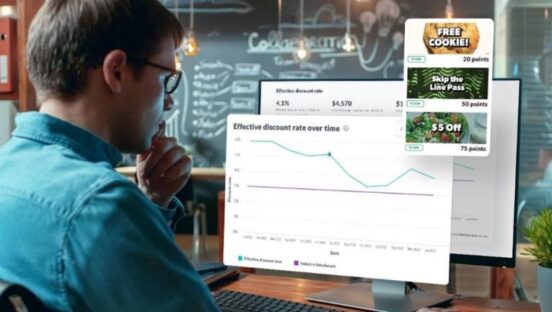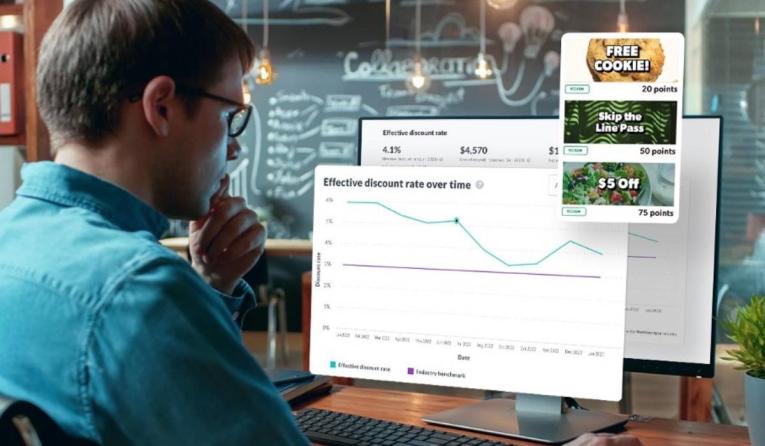Editor’s note: This is the third and final articles in a series of articles on, “How to Measure the Success of Your Loyalty Program.” Read part one here and part two here.
I started my career at Bain & Company where my work ranged from semiconductor mergers and acquisitions to pharmaceutical go to market. But I quickly discovered a passion for helping restaurants and retailers measure and grow customer lifetime value.
At that time, many of these businesses were more focused on customer acquisition than retention (think Groupon). But the most powerful lessons I learned from my bosses at Bain (who went on to become CEOs of Dominos and Nike, among others) reminded me that increasing customer retention by 5 percent increases profits by 25 to 95 percent and in fact, acquiring a new customer can be five to 25 times more expensive than retaining a customer.
Combined with Fred Reicheld’s seminal work on Net Promoter Score, I have been preaching the Bain gospel ever since. The value of retention versus acquisition is less controversial now, but there is still a huge opportunity for brands to drive down the cost of maximizing lifetime value—in fact, many brands are often surprised that there is not a direct correlation between the cost of a loyalty program and the results it produces. Airlines drive fierce preference from giving away free unused inventory (first class seats), not discounts.
At Thanx we prefer the word “loyalty program” versus “rewards program” because it describes the impact not the means, and we call this airline strategy “access, not discounts.” To enable this, we make it easy for brands to measure the types of costs associated with their loyalty program with our Effective Discount Rate (EDR) reporting—an industry first.
The core goals of a loyalty program—to convert unknown customers to known, capture data, and activate that data to drive higher lifetime value—are understood universally. Done right, loyalty programs identify the top 20 percent of guests driving 80 percent of revenue; by locking them in (preventing churn) or growing spend per the numbers cited above, these programs can easily pay for themselves many times over. But in the restaurant industry, this has historically come with a hidden downside: discounts. In general, the P&L line item for loyalty discounts against revenue greatly exceeds the technology and personnel cost of running a loyalty program.
Many brands cite their loyalty program growth; few share the effective cost of the program (and as we discussed in my previous writing on reach, this is not the right way to measure reach anyways). Many talk about the “spend lift” from loyalty customers versus non-loyalty customers; few include discounts to measure the actual gross margin impact (and as we discussed in my previous writing on impact, this is not the right way to measure impact anyways).
In these earlier articles, we talked about measuring loyalty in terms of reach (the amount of revenue that can be attributed to known and reachable customers) as well as impact (the ability of your loyalty program to create more activated and engaged customers while retaining them longer). But surely you wouldn’t give away 100% of your margin just to get excellent reach and impact. There’s an implicit give-and-take. Knowing and benchmarking your effective discount rate—essentially an equation based on menu price, cost of goods sold, and “redemption lift” (a change in behavior that occurs only when a consumer is redeeming a reward)—is crucial to ensuring overall program profitability and improving it.
Frankly, it’s quite easy with rote rewards programs. In a “buy-10, get-one-free” program (if we assume the purchase amount is the same for “earn” and “burn” transactions and a 50 percent gross margin), the EDR is 5 percent. If only half of the earned rewards ever redeem, your effective discount rate is now 2.5 percent (though you need to manage the accrued liability of unused rewards on your balance sheet with clear expiration rules). If instead the reward was a “2-for-1” after 10 purchases and as a result the average ticket on redemption (burn) was 200 percent your earning tickets (earn), EDR gets cut in half (now 1.25 percent).
But today, when brands have to compete aggressively for share of wallet from not only competitors but also third-party, successful loyalty programs can no longer be this simple. Think about when Starbucks added layers to their loyalty model with the addition of stars and various earn and burn qualifiers—bonus points, challenges, gamification, and non-discount or experiential rewards all complicate the calculation but also give marketers more tools to optimize their program. This is why Thanx has rolled out industry-first EDR reporting — both in aggregate and by reward type—to make measuring and optimizing cost simple and so our valuable finance resources can do other important things.
Restaurant loyalty in 2023 demands a more vibrant and dynamic offering to court and impact the most valuable guests—not only is “access” often more compelling for these high-value consumers, it can also greatly reduce EDR. Some examples of non-discount rewards that are a dual threat, driving impact AND reducing cost:
- Secret menu offering access to exclusive items only available to customers who reach a certain spend threshold
- A “golden ticket” giving access to a limited edition swag store for branded apparel
- “Skip the line pass” or exclusive reservations inventory giving high-frequency guests the opportunity to flex their status and get a table when they want it
- Invite to a VIP dinner with the chef
By definition, most non-discount rewards have an EDR contribution of zero. But of course there is a role for discounts in loyalty—it’s about choosing the right tool for the right occasion, not overly relying on just this one. And even in a discount-heavy program, Thanx has tools to impact EDR. Done right, loyalty programs are dynamic; your business changes by the week (or hour)—the cost of avocados goes up, rain dampens traffic, Instagram drastically changes demand for your desserts, etc.—your loyalty program should, too.
That’s why Thanx has created an industry-first real-time, self-configurable points marketplace that allows you to change (and automate) what rewards are available, to whom (e.g. a certain tier), and at what EDR. Perhaps you’ll be more generous (higher EDR) on rainy days, less generous with your always ordered “star item” of the moment (lower EDR), and temporarily increase the cost of redeeming for avocado toast when needed (lower EDR).
There’s another benefit of loyalty dynamism: once you train consumers to expect change — the way Uber does with pricing — they become less resistant to it. Dunkin’ received blowback when changing their rewards model in large part because the same program had been in place unaltered for over a decade. If you pay attention today, industry leaders like Starbucks and Chipotle (and now Dunkin’ too) regularly adjust the points “cost” of items, change out redeemable rewards “inventory,” adjust which items have bonus multipliers, and experiment with non-discount offerings (with Starbucks Odyssey’s digital collectibles being the most avant garde attempt). This avoids the need to completely overhaul a program overnight and blindside customer expectations.
So what is the right way to manage your effective discount rate (EDR)?
It’s not always about reducing costs, but it can be. If your program is too generous, you may want to lower your costs, but do so with consideration for reach and impact goals.
Ensure your loyalty platform is dynamic, not fixed to break the sense that consumers are owed a fixed discount. For example, you could make your Rewards Marketplace seasonal with new perks each quarter. You can then reduce your effective discount rate over time, without upsetting your customers.
Drive down EDR by incorporating non-discount rewards. In many cases, these rewards will end up earning higher engagement and reduce costs; sometimes it’s only one or the other and that’s OK too depending on your goals.
Zach Goldstein is the CEO and founder of Thanx. Founded in 2011, Thanx is a guest engagement and retention platform helping restaurants and retailers become more digitally agile to maximize customer lifetime value. Prior to earning his MBA from Stanford, Goldstein honed his experience in the customer loyalty space at Bain & Company, helping companies perfect their retention and reward strategies as early as 2005.









